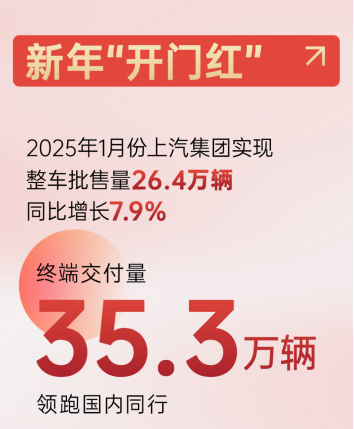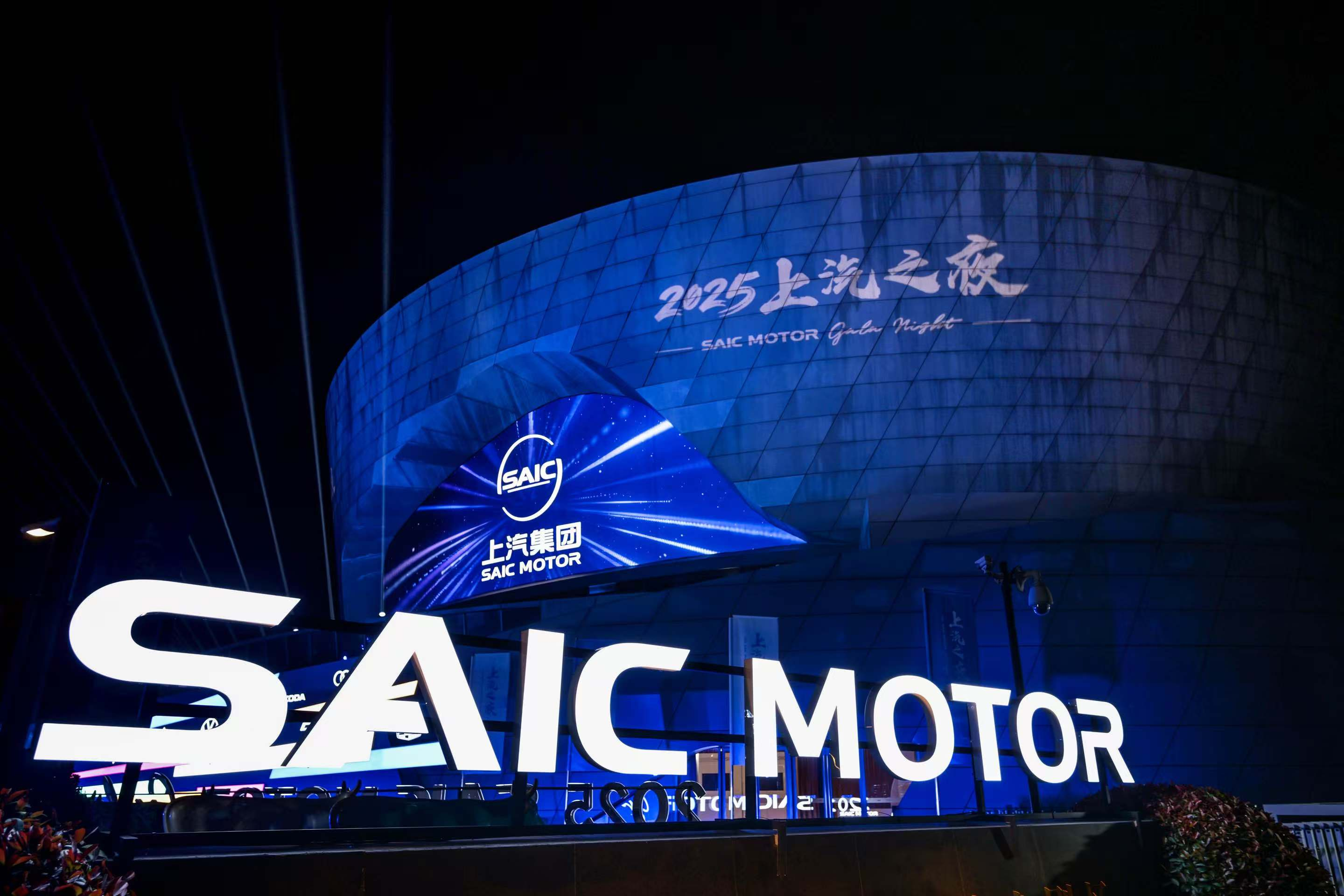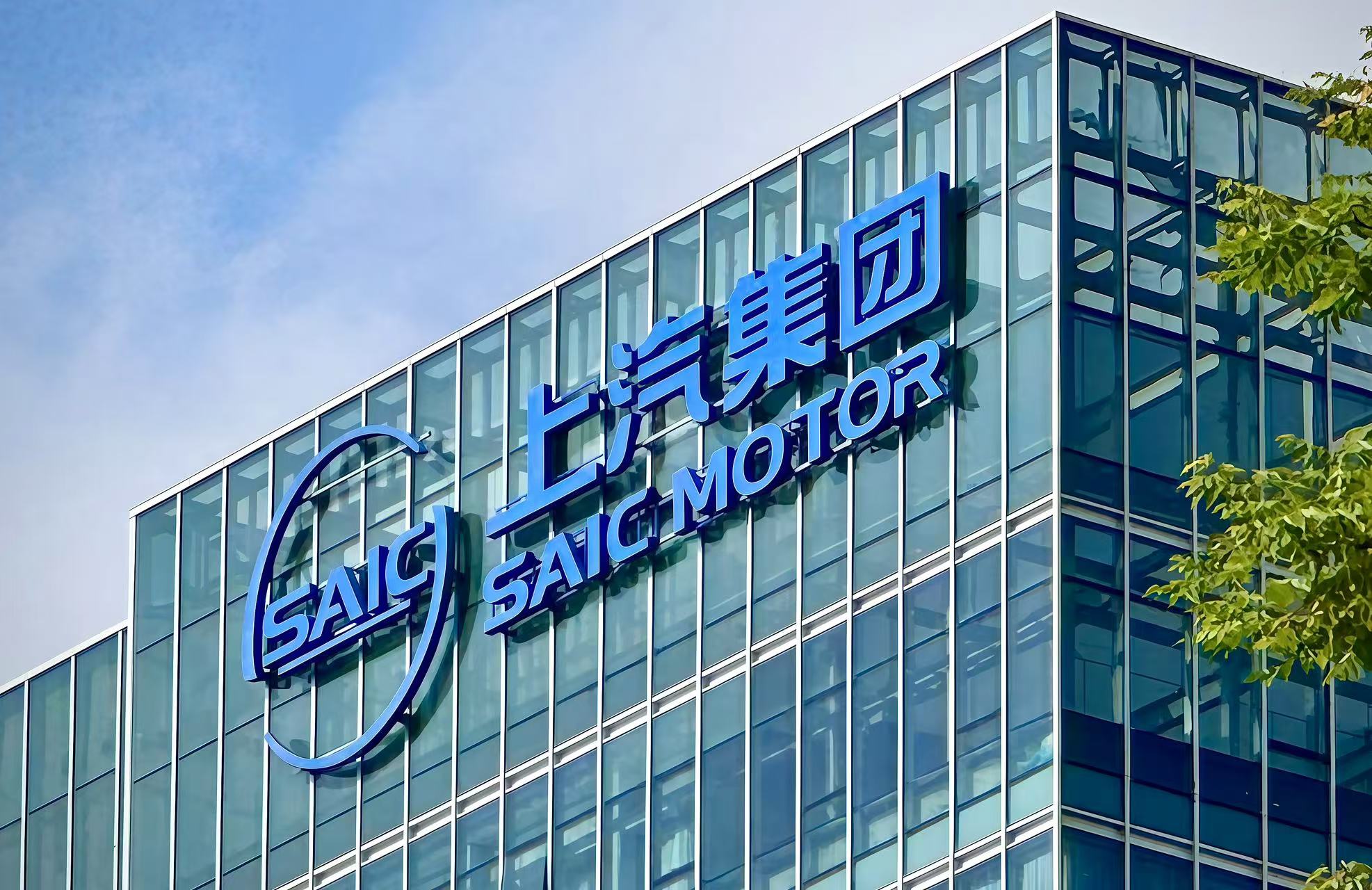
In January 2025, SAIC Motor had a shocking start, leading the way with 353,000 terminal deliveries, with independent brands, new energy vehicles and overseas markets all making great strides. Among them, 206,000 vehicles were delivered to independent brands, accounting for nearly 6 percentage points of the group's overall sales compared with the same period last year; 87,000 new energy vehicles were delivered to terminals, continuing to rank among the top in the industry; and 90,000 vehicles were delivered to overseas markets, a year-on-year increase of 7.8%.

This is not only a sales report, but also a concentrated outbreak of a strategic transformation that has been accumulating for three years. While global automakers are still struggling to clear the fog in the jungle of electrification and intelligence, SAIC's report card implies a trend: the competition dimension of China's auto industry has been upgraded from a single product competition to a comprehensive competition for technical standards, ecological alliances and the right to speak on global rules.
In the year of breakthrough, state-owned enterprises took on the responsibility to build resilient growth
Looking back at 2024, the global automotive industry is in the midst of transformation pains. Europe's carbon tariffs are high, Southeast Asian markets have strict trade barriers, and multinational automakers' investment in electrification has collectively shrunk. Against this backdrop, SAIC Motors delivered a brilliant answer sheet last year with three milestones: "60% of independent brands, 1.37 million new energy vehicles sold, and 1.082 million vehicles delivered overseas." This year, SAIC not only maintained the basic foundation of China's automotive industry, but also proved to the world the hard-core strength of Chinese technology with the 4 million kilometers of road testing of Zhiji's L4-level Robotaxi and the fuel consumption limit of 1.55L/100km for the DMH super hybrid.
While multinational giants are losing market share due to their hesitation in electrification, SAIC Group's counter-cyclical growth in this field reveals the deep logic of industrial transformation - only by mastering the sovereignty of core technologies can we remain invincible in cyclical fluctuations.
The "seven major technology foundations" built by 150 billion yuan of R&D investment over ten years have enabled SAIC to achieve full-stack independence in the three technical routes of pure electric, hybrid and hydrogen energy. This is the confidence it needs to survive the industry's "cold winter".

By 2025, SAIC Group will usher in a triple leap in organizational reform, technological breakthrough and ecosystem construction.
Starting with the "large passenger car strategy", SAIC is launching an organizational optimization reform: comprehensively integrating the R&D, supply chain and overseas business of the four major brands of Roewe, MG, Zhiji and Feifan, to create the first "integrated research, production and sales" super platform in the Chinese automobile industry. This reform directly targets the chronic diseases of traditional car companies - the R&D Institute incorporates core technologies such as intelligent driving and digital chassis in a "centralized" mode, and uses "large single product development" to increase R&D efficiency by 40% and reduce single-vehicle costs by 30%; overseas business is deeply integrated with Anji Logistics' global supply chain, allowing the MG3 HEV in the European market to form a strategic synergy with the Southeast Asian smart port. As Wang Xiaoqiu said: "SAIC wants to become a test field for the reform of the global automobile industry, rather than a gravekeeper of the old model."

While competitors define efficiency through vertical integration and reduce costs through modular platforms, SAIC's "big single product strategy" attempts to find a balance between scale and personalization. If successful, it may explore a third path for Chinese automakers that balances scale and personalization.
In terms of joint venture brands, the two giants, SAIC Volkswagen and SAIC GM, will also strive to become the leaders in the joint venture 2.0 era through proactive reforms.
SAIC-GM has achieved the top penetration rate in the mainstream joint venture camp with a new energy growth rate of 56%, and has driven six consecutive increases in terminal sales through product iteration and marketing innovation. It plans to launch a number of new energy vehicle models in 2025, covering a variety of power forms to meet the diversified needs of the market, and has taken solid steps in technological upgrading. Through SAIC-GM and Pan Asia's own research and development, SAIC-GM will 100% focus on product definition and digital function development around the needs of Chinese customers, further narrowing the distance with consumers and achieving true localization and customization. When shutdowns and mergers become the mainstream means of cost reduction, SAIC-GM also plans to build 54 new dealerships across the country.

SAIC Volkswagen has retained the title of the fuel vehicle market with sales of 1.2 million vehicles, and its sales of 143,000 new energy vehicles have confirmed the effectiveness of the "oil-electric co-development" strategy. In terms of reform, it pays more attention to deepening cooperation and technological innovation. SAIC Group and Volkswagen Group continue to work together to jointly develop more new energy models that meet the needs of the Chinese market and promote the rapid development of the brand in the new energy field. At the same time, the construction of a digital integrated marketing service system that directly connects users and is service-oriented also reflects its high attention to improving user experience and service quality.

During the reform journey, SAIC Motor's "large passenger car sector" and joint venture sector moved forward side by side, each shining with brilliance. They are both pioneers in the reform wave, showing extraordinary vitality and determination.
This reform momentum is not only reflected in products and technologies, but also in SAIC's keen insight into the market and firm belief in the future. Under the guiding ideology of "only by deeply understanding the Chinese market can we develop products that truly meet the needs of Chinese consumers", this automobile group standing at the top of the Chinese automobile industry is constantly pushing its brands to a higher level and wider field with a fearless attitude.
Technological leap: Chinese standards define the era of smart electric vehicles
The height of technology determines the future of an enterprise. In 2025, SAIC's "Seven Technology Bases 2.0" will usher in a full-scale outbreak, and its technology layout directly targets the core battlefield of intelligent electrification - the intelligent architecture revolution and energy technology subversion.
In the field of intelligence, SAIC has built a complete technology matrix covering L2-L4 autonomous driving with the dual-wheel drive of "full-stack self-development + open co-creation". The implementation of Galaxy's full-stack 3.0 solution marks the first time that a Chinese automaker has broken through the engineering difficulties of the "central computing + regional control" architecture - by streamlining 100 ECUs to 5 domain controllers, the data bandwidth has increased by 5 times, the OTA efficiency has increased by 300%, and the wiring harness length has been reduced by 30%. This architectural breakthrough not only completely reconstructs the evolutionary logic of smart cars, but also achieves global optimization from perception, decision-making to execution with a "one-stage end-to-end intuitive smart driving big model".
The Zhiji LS6 equipped with this system is the first to achieve full coverage of the "No-Map City NOA", and in extreme scenarios such as U-turns on narrow roads in downtown areas and avoiding ghosts, it has set a new industry record with a 95% decision-making anthropomorphism.

At a time when end-to-end big models have become the mainstream technology, SAIC has increased the efficiency of algorithm iteration by 3 times through the "software and hardware integrated" architecture design. Its "heavy perception, strong generalization, light map" technology route is providing a replicable engineering paradigm for the implementation of China's intelligent driving technology.
The breakthrough in power technology is equally astonishing. With software algorithms as the core, DMH super hybrid technology pushes the hybrid engine thermal efficiency to 46%, shortens the electronic control system response speed to 0.2 seconds, and cooperates with the "intelligent energy management engine" to allow the Roewe D7 DMH to achieve a measured fuel consumption of 1.55L/100km, achieving a historic leap from technology catching up to standard definition for "Chinese hybrid".
In Europe, the MG3 HEV's P1+P3 dual-motor architecture and intelligent thermal management system broke through the EU's technical barriers with a fuel saving of 1 liter per 100 kilometers, and was described by Automotive News as "the third solution for hybrid technology."
SAIC's technological leap is not a single breakthrough, but a systematic innovation. The commercial verification of the "re-sensing" route in the field of intelligent driving, the leap of hybrid technology from "catching up" to "defining standards", and the subversion of the liquid battery era by all-solid-state batteries, the intersection of these three technological torrents is pushing the Chinese automobile industry to the commanding heights of the global technology competition. As pointed out in the McKinsey report: "While the industry focuses on the large model algorithm competition, SAIC's 'architecture first' strategy is taking the lead in the competition for the underlying logic of smart electric vehicles."
Ecological expedition: Joint venture 2.0 era and reconstruction of global rules
One can go faster alone, but one can go farther in a group. Adhering to the principle of “happiness shared with others is worse than happiness alone”, SAIC Group has taken the initiative to build a “community of shared destiny” in the automotive industry.
The new AUDI brand jointly created by SAIC and Audi has become a milestone in the era of joint venture 2.0 in China's automobile industry. This strategic cooperation completely subverts the traditional model: the first model based on the Advanced Digitized Platform has a jointly defined architecture by the Chinese and German teams; the channel side adopts a "direct sales + agency" hybrid system to achieve full life cycle coverage of user operations. The birth of the AUDI brand marks the first time that a Chinese automaker has participated in the formulation of global luxury car standards as a technology exporter. While competitors are still arguing about "specially supplied cars for China", SAIC has transformed the "right to define the Chinese market" into the "right to speak on global rules" through technological equality.

The expansion of the ecological layout does not stop there. SAIC Motor and CATL have signed a strategic agreement worth hundreds of billions of yuan to lock in the exclusive supply of Kirin batteries, allowing SAIC to obtain the "ultimate weapon" comparable to the industry's top power batteries; its subsidiary Anji Logistics has joined hands with COSCO Shipping Holdings to create a "golden channel for automobiles to go overseas" and build an infrastructure moat in 53 countries; Zhiji Auto's 9.4 billion yuan B round of financing is aimed at the international standard of digital chassis, and the cooperation with Beijing Institute of Technology focuses on the underlying algorithm of L5 autonomous driving. This series of actions is pushing SAIC from a product manufacturer to an ecological leader.
Compared with the overbearing approach of building a wall with a closed ecosystem and controlling the market with vertical integration, SAIC has chosen a more open path. Through technology licensing (such as the export of DMH hybrid to joint ventures), standard co-construction (such as the open source of the zero-beam Galaxy architecture), and capital ties (such as Zhiji's introduction of strategic investors), suppliers, partners, and even competitors are transformed into ecological allies. This strategy of "taking ourselves as the main body and being inclusive" is precisely the key leap for China's automobile industry to shift from single-point breakthroughs to system capability output.
at last
All beneficial ways go with the times. Standing at the beginning of 2025, behind SAIC's first month's delivery of 353,000 vehicles is a dimensional answer sheet about the upgrading of China's automobile industry. On the tail logo of the AUDI brand laser engraved, in the navigation system of the autonomous driving container truck in the Port of Chancay, Peru, and in the fuel tank of the Roewe D7 DMH that broke the Guinness record, the outside world sees not only the spark of technological innovation, but also the determination of a state-owned automobile group to leap into a world-class technology enterprise.
When European and American automakers are reducing their investment in electrification, Japanese automakers are betting on hydrogen energy and solid-state batteries, and new forces are stuck in a profit dilemma, SAIC's "full-stack autonomy + ecological openness" model may have explored a unique path for Chinese automakers. The Volkswagen Group will extend its joint venture to 2040, and CATL will give priority to supplying Kirin batteries. These signals all indicate that a new order of the global automotive industry with China at its core has begun to take shape.


